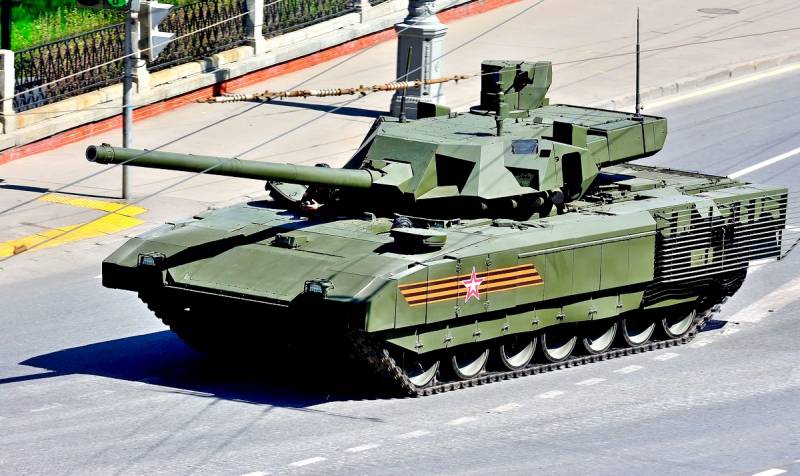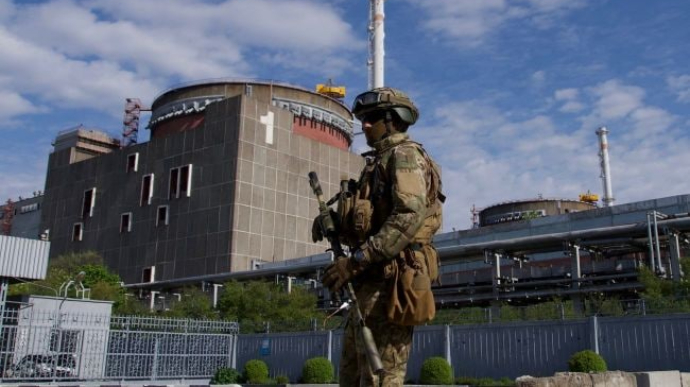The nuclear sector remains one of the few segments of the Russian energy industry not currently under sanctions. The Kremlin is actively taking advantage of this situation by continuing its international expansion, offering nuclear power plant construction services worldwide and forming new, potentially threatening dependencies.
Rosatom, Russia’s state nuclear corporation, has been impressively active in its foreign endeavors. A quick glance at Russian news feeds regarding Rosatom reveals a plethora of new agreements, memoranda, and areas of activity:
- On April 19, Rosatom announced its intention to participate in the construction of wind farms and solar power plants in Türkiye.
- Just three days later, on April 22, reports emerged that Rosatom and Uzatom, Uzbekistan’s nuclear energy agency, were working on a contract for the construction of a nuclear power plant in Uzbekistan.
- The following day, April 23, Rosatom presented its floating nuclear power plant project, which it proposes to offer to the foreign market.
- And on April 25, the corporation set a record in nuclear engineering for 2023, with the production of 5 reactor bodies and 18 steam generators.
In order to understand why it is necessary to urgently limit the Russian offensive in the world nuclear energy, the think tank DiXi Group collected five reasons why the Russian nuclear corporation.
1. Rosatom fuels Russia’s war machine
Despite efforts to conceal its military ties, evidence suggests Rosatom enterprises are involved in producing weapons and components for Russia’s army, including depleted uranium shells and anti-tank missiles.
- In early May 2023, information surfaced on the Russian Internet about Rosatom’s participation in the production of ammunition for the Russian army, specifically armor-piercing subcaliber shells based on depleted uranium.

Rosatom has developed armor-piercing shells based on depleted uranium for the Rssian Armata tank. Photo from open sources - In 2017, it was reported that the Federal Scientific and Production Center “M.V. Protsenko Start Production Association”, a Rosatom subsidiary, was mastering the serial production of 57 mm projectiles for an anti-aircraft artillery complex.
- The portal of closed administrative and territorial entities indicates that the Start production association, also a Rosatom subsidiary, is the main manufacturer of Russia’s most powerful Khrizantema anti-tank guided missile (ATGM).
- Since the early 1990s, the All-Russian Research Institute of Experimental Physics “Russian Federal Nuclear Center” has been engaged in the development of anti-tank ammunition with cumulative charges of monoblock and tandem schemes, including the design of parts for the Ataka missile and the Khrizantema ATGM.
The Washington Post confirms Rosatom’s involvement in supplying components, equipment, and raw materials for the Russian army, citing a letter from the head of a Rosatom department accessed by Ukrainian intelligence.
The letter mentions that representatives from Almaz-Antey Corporation, Tekhmash NPK, High-Speed Complexes Enterprise, Splav NGO, the state aviation conglomerate, and several manufacturers of armored personnel carriers and tanks were invited to a meeting.
Furthermore, Rosatom’s leadership reported flawless execution of the significantly increased state defense order for 2023.
2. Rosatom exploits the IAEA to continue its international expansion
Rosatom uses its senior representative at the IAEA to gain insider information and competitive advantages, while also influencing decisions that impact Ukrainian nuclear facilities.
In March 2022, Greenpeace International called on the IAEA to immediately remove Mikhail Chudakov from his position as Deputy Director General. Switzerland supported this demand in April of the same year.

Through its representative, Rosatom can access information from various countries regarding their intentions to build new nuclear power plants, interest in the latest developments, and efforts to increase the efficiency of technological processes. This information is collected by the IAEA Department headed by Chudakov, allowing Rosatom to be the first to offer its services and developments to interested parties. Additionally, Russian representatives can significantly influence IAEA decisions, including those pertaining to Ukrainian nuclear energy facilities.
Russian media also actively publishes news about the cooperation between Rosatom and the IAEA, particularly regarding:
- Rosatom’s continued financing of IAEA programs, including technical cooperation, the Physical Nuclear Safety Fund, the cancer-fighting program, and the international project on innovative nuclear reactors and fuel cycles (INPRO);
- Russia’s participation in the implementation of IAEA technical cooperation projects for developing nuclear infrastructure in newcomer countries;
- Joint efforts with the IAEA in training foreign students.
3. Rosatom helps Russia ensnare countries into resource dependency
Rosatom’s nuclear energy deals often leave host countries reliant on Russian financing, maintenance, training, and fuel, creating geopolitical vulnerabilities.
The nuclear giant is actively expanding its international presence. As of the end of 2021, the corporation reported that its representative offices were operating in Russian embassies and trade missions in 10 countries worldwide, as well as at the permanent representation of the Russian Federation to international organizations in Vienna. The Russian nuclear giant is actively establishing cooperation with countries that have declared their intention to develop nuclear energy.
In 2023, nearly 20 agreements and memorandums of cooperation were signed, targeting Asian and African countries interested in affordable nuclear technologies. When Russia constructs a nuclear power plant abroad, the host country risks falling into long-term geopolitical and resource dependence on Russia. These facilities are often financed by Russian state loans and require maintenance, personnel training, and a steady supply of nuclear fuel.
4. Rosatom enables Russia’s occupation of Ukraine
Rosatom has established companies to operate seized nuclear plants and provide electricity in Russian-occupied areas of Ukraine, effectively facilitating the illegal annexation.
In October 2022, a notice appeared about the establishment of a separate company within the structure of Rosatom — the joint-stock company Operating Organization of the Zaporizhzhia NPP. Employees of the Zaporizhzhia NPP, Europe’s largest nuclear power plant since 2022 under the control of Russia’s occupation troops, were transferred to this new entity to continue performing their duties.

It was also reported that Rosatom is responsible for providing electricity to the population and enterprises of Russian-occupied parts of Ukraine. In July 2023, separate energy distribution enterprises were established within Rosatom’s structure specifically for this purpose: LLC “Energozbut Zaporizhzhia” (TIN 9725129181), “Energozbut Kherson” (TIN 9725129343), “Energozbut Luhansk” (TIN 9725129223), and “Energozbut Donetsk” (TIN 9725129199).
5. Rosatom enjoys unchecked global influence
Rosatom continues to ink deals and expand into new markets, allowing Russia to project power and influence through its nuclear industry. Information on the corporation’s latest acquisitions can be found in the public domain:
- 50% of Kod Bezoposnosti LLC, one of the largest Russian developers of software and hardware certified means of information protection;
- 98.32% in Enertech, a South Korean lithium-ion battery manufacturer;
- Tugansk mining and processing plant Ilmenit, one of Russia’s largest producers of titanium and zirconium;
- OJSC Kirov-Energomash Plant, a manufacturer of equipment for various branches of the energy industry;
- 49% in blocks 6-7 of the Budyonovsk uranium deposit in Kazakhstan, making Rosatom the owner of the world’s second-largest uranium reserves.
Why Rosatom should be sanctioned
Given these facts, sanctions against Rosatom should be a priority when discussing further pressure on Russia. Without significant pressure, the Russian nuclear corporation will continue to expand its presence in Africa and Asia, offering its nuclear technologies in promising markets.
Rosatom also plays a crucial role in fulfilling state orders for weapons manufacturing, making it an important element of the Russian military sector. The corporation is constantly expanding its activities and mastering new areas of production.
Despite some attempts to introduce sanctions against Russia’s nuclear industry, more comprehensive measures are needed:
- Implement automatic sanctions against all Rosatom assets acquired after 24 February 2022, to effectively limit Russia’s access to modern technologies and resources.
- Expand sanctions to include all research organizations associated with Rosatom to further limit Russia’s technological capabilities.
- Increase efforts to eliminate US and EU dependence on Russian nuclear fuel.
- Stimulate transatlantic cooperation to reduce dependence on Russian resources and increase pressure on Moscow to comply with international nuclear safety standards.
These recommendations emphasize the importance of complex and coordinated actions to effectively contain Russia’s military potential and advance Western interests.
Related:
- US Congressman: Rosatom buys new assets to circumvent current sanctions
- Russia’s Rosatom’s income increased by 17% last year as Ukraine insists on sanctions
- UK invests in high-tech nuclear fuel to push Russia out of market
- UK invests in high-tech nuclear fuel to push Russia out of market
- Russia’s nuclear arsenal has a bottleneck



